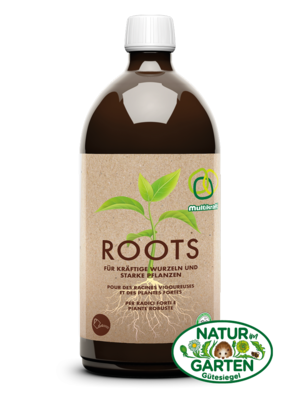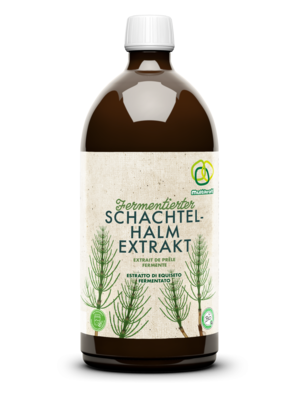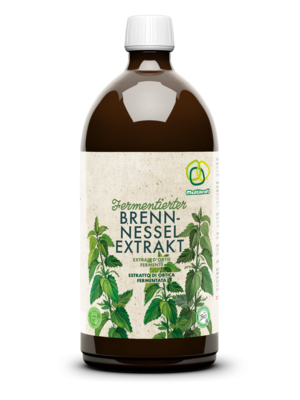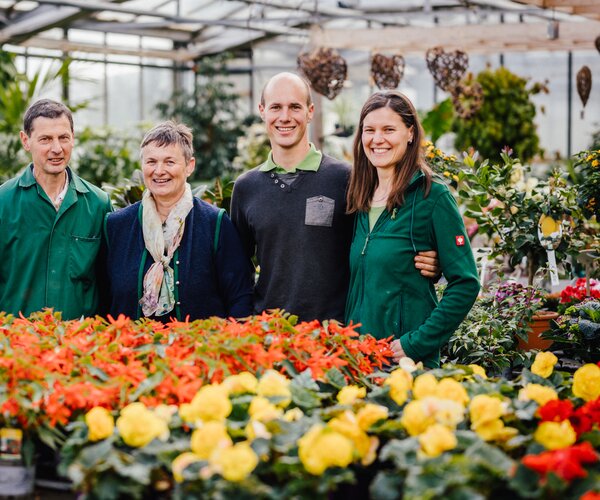
This saves you watering the vegetable garden
In summer, plants can survive without watering despite the heat and drought if the soil is well mulched and contains enough life. Bernadette Schützenhofer does without watering all summer and still harvests the best vegetables.

The vegetable garden at the Schützenhofer nursery in Rohr im Kremstal is her stomping ground and also her great passion. ‘In the 1980s, my husband and I took over the business and converted to organic cultivation.’ Since 2002, they have focussed on mixed cultivation. The vegetables are not planted in beds, but in rows. ‘With a row spacing of 50 centimetres. Depending on the type of vegetable, each plant has its own space requirements.’ The business is now in the hands of Bernadette's son David, but Bernadette and her husband Johann continue to actively support him.
The vegetable garden at the Schützenhofer nursery in Rohr im Kremstal is her stomping ground and also her great passion. ‘In the 1980s, my husband and I took over the business and converted to organic cultivation.’ Since 2002, they have focussed on mixed cultivation. The vegetables are not planted in beds, but in rows. ‘With a row spacing of 50 centimetres. Depending on the type of vegetable, each plant has its own space requirements.’ The business is now in the hands of Bernadette's son David, but Bernadette and her husband Johann continue to actively support him.

Mulch correctly
Between 50 and 60 different types of vegetables and herbs thrive on the 1,200 square metre cultivation area. In spring, the soil is mulched with grass cuttings and in autumn with leaves. ‘We don't turn over the soil in autumn, but cover it with leaves.’ The optimum mulch layer is around three to five centimetres. The expert advises against bark mulch. ‘It makes the soil acidic.’ Proper mulching needs to be learnt so that the soil life has enough food and doesn't die off. Healthy soil has many microorganisms. Too much watering causes many microorganisms to atrophy. ‘This is where EM Active helps us as a base to multiply the microorganisms,’ explains the vegetable expert. She also uses Roots on open ground with less plant growth and Plants when plant activity is high. ‘By spring, the leaves have been converted into humus by the soil life and the soil becomes more storable, ensuring that the plants are well nourished even during long periods of drought.’ At the same time, heavy rainfall can be absorbed more easily when the weather changes.
Do not water!
The most important rule for Bernadette Schützenhofer is: ‘If the soil is optimally prepared, watering becomes superfluous. Plants that are not constantly pampered with water develop much stronger roots and get their nutrients from the soil.’ Bernadette herself is surprised at how effective the protective layer is. ‘I lifted the mulch layer once in midsummer after three weeks of drought and the soil underneath was moist.’ At her gardening lectures, she repeatedly observes that many amateur gardeners complain about the high water consumption for watering in summer, while at the same time there is a great fear of water shortages. ‘If you take good care of your soil and ensure that the soil life is active, you don't have to worry about the harvest failing.’ What applies to vegetables is also good for flowers. ‘In ornamental gardens with rose plants, the soil can also be well prepared so that the plants are well cared for and no watering is necessary,’ says Bernadette.
The most important rule for Bernadette Schützenhofer is: ‘If the soil is optimally prepared, watering becomes superfluous. Plants that are not constantly pampered with water develop much stronger roots and get their nutrients from the soil.’ Bernadette herself is surprised at how effective the protective layer is. ‘I lifted the mulch layer once in midsummer after three weeks of drought and the soil underneath was moist.’ At her gardening lectures, she repeatedly observes that many amateur gardeners complain about the high water consumption for watering in summer, while at the same time there is a great fear of water shortages. ‘If you take good care of your soil and ensure that the soil life is active, you don't have to worry about the harvest failing.’ What applies to vegetables is also good for flowers. ‘In ornamental gardens with rose plants, the soil can also be well prepared so that the plants are well cared for and no watering is necessary,’ says Bernadette.
Success you can smell
The transition to a healthy garden happens fairly quickly. ‘If you plant and mulch well, you can save yourself watering in the first year,’ says Bernadette. ‘In the second year, the change in soil and soil life becomes noticeable. From the fifth year onwards, the colour and smell of the soil often change too. After seven to eight years of mulching at the latest, this transformation is even more obvious.’ Bernadette describes the odour as ‘pleasant forest soil’. In contrast to soil that is not mulched and watered too much, which tends to develop a foul odour.
Do not panic
Bernadette Schützenhofer's wise advice is to keep calm in midsummer: ‘Plants protect themselves in the heat and reduce the surface area of the leaves.’ This can be observed very well with courgettes, for example. ‘Visually, they may appear wilted, but when you walk through the garden in the morning or evening, the vegetables shine again in all their glory.’ Don't be tempted to water them. The vegetables will thank you.
Bernadette's special doses:
∙ In spring from March to the end of April and in autumn from October to November: finely spray 500 ml EM Active and 400 ml Roots in 10 litres of water over around 500 m2 using a backpack sprayer.
∙ From May: Spray 500 ml EM Active and 400 ml Roots in 10 litres of water.
∙ The Schützenhofer nursery uses fermented horsetail extract - 200 ml to 10 litres of water and Biolit primary rock flour in combination with EM ceramic powder and fermented nettle extract - 200 ml to 10 litres of water to help combat fungal pressure.
∙ When and how often: apply regularly once a week. In sunny weather in the early morning or evening, in cloudy weather throughout the day.
∙ In spring from March to the end of April and in autumn from October to November: finely spray 500 ml EM Active and 400 ml Roots in 10 litres of water over around 500 m2 using a backpack sprayer.
∙ From May: Spray 500 ml EM Active and 400 ml Roots in 10 litres of water.
∙ The Schützenhofer nursery uses fermented horsetail extract - 200 ml to 10 litres of water and Biolit primary rock flour in combination with EM ceramic powder and fermented nettle extract - 200 ml to 10 litres of water to help combat fungal pressure.
∙ When and how often: apply regularly once a week. In sunny weather in the early morning or evening, in cloudy weather throughout the day.

By Susanne Schütz and Anne Lorch
When we dream up visions, we discover completely new facets and possibilities. They give us the strength to abandon established and proven habits. Even seemingly absurd fantasies about the future motivate us and help us to create new guidelines and behaviours, even though they seem to completely contradict the current zeitgeist.
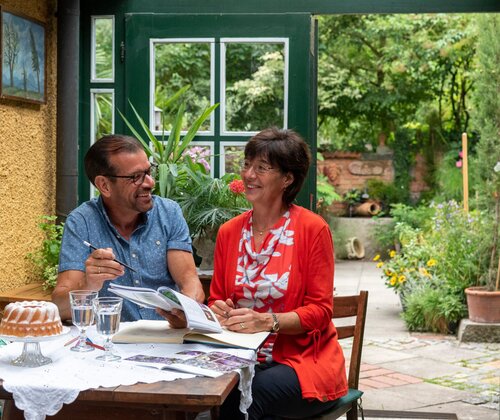
Anyone entering Karl Ploberger's garden in Seewalchen is in a different world: lush nature that is only "tamed" in some areas and an enormous variety that reflects the credo of Austria's most famous natural garden ambassador: "No matter what you do, always draw on the wide range of plants. That's what ultimately turns a green oasis into a paradise," says Ploberger with a sparkle in his eye.

Soil is the basis of all horticultural work. It is more than just the soil beneath our feet - it is a living ecosystem that forms the basis for the growth of healthy plants. On a small and large scale, in the garden and in the field. Here you can find out how to determine the type of soil in your garden, what humus is all about and how you can increase the humus content in your soil with the help of simple measures.
